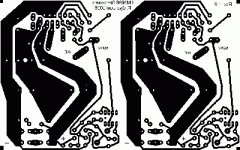What about class A amps? How this apply to them? What capacitance to use behind the regulator in lets say Aleph 30 or Aleph 5 situation?
grege said:From my point of view, the regulated supply has a permanent 8 volt voltage drop which is probably greater than that of the unregulated PSU.
I meant the voltage drop on the chip's pins, on the amp.
On an unregulated PSU that is modulated with the music, depending on how much current the amp is asking from the PSU.
AR2 said:What about class A amps? How this apply to them? What capacitance to use behind the regulator in lets say Aleph 30 or Aleph 5 situation?
You don't need more than 10,000uf before the reg.
carlosfm said:I meant the voltage drop on the chip's pins, on the amp.
On an unregulated PSU that is modulated with the music, depending on how much current the amp is asking from the PSU.
I understood what you meant, I was just trying to say that to achieve a sag free PSU, we have to add a regulator that permanently drops, in this case 8 volts. The power used by the regulator is not avaliable to the amp. That's all.

grege said:
I understood what you meant, I was just trying to say that to achieve a sag free PSU, we have to add a regulator that permanently drops, in this case 8 volts. The power used by the regulator is not avaliable to the amp. That's all.
i think logically, less regulated power is better than more but sagging power.
also, chips have a voltage limit, so if you like listening to them at say 32 volts, use a 40V trafo regulated down to 32. so in this case, yes those extra 8 volts are not available, but you dont want them to be anyway.
but i see what you mean if you are using the same trafo for both situations.
homer09 said:also, chips have a voltage limit, so if you like listening to them at say 32 volts, use a 40V trafo regulated down to 32.




carlosfm said:
haha, i know these are way to high for LM series chips. i just pulled numbers out of the air. no need for fire warnings!
homer09 said:haha, i know these are way to high for LM series chips. i just pulled numbers out of the air. no need for fire warnings!
Didn't you find out yet?😀
With a 40V trafo you will get 56V

I wish, you still have a happy and sunny sunday, regardless of neverending stories 
Kind regards
Franz

Kind regards
Franz
... I am planning and building my external DAC, with tube (sorry, valve) output stage, based on a CS8412 and a TDA1541A
This is the idea about the audio stage:
cheap but very good PCL82, voltage gain with the triode part of it, DC-coupled to a cathode follower, the pentode part, to reduce the output Z.
This is the idea about the audio stage:
cheap but very good PCL82, voltage gain with the triode part of it, DC-coupled to a cathode follower, the pentode part, to reduce the output Z.
Attachments
Franz G said:... I am planning and building my external DAC, with tube (sorry, valve) output stage, based on a CS8412 and a TDA1541A
If that's a NOS dac, you need to compensate for the high-frequency roll-off.
What are you making new ?
... and because all my LM3875 samples are used, I must start to use LM3886

So, I prepared a new stereo pcb, snubberized and high cap, two trannies, separated grounds, OPA627 buffer, T-net on the board...
Franz
Attachments
jackinnj said:
Have you actually measured the PSRR of a chipamp?
I'll ask the question again -- we can all cut and paste something from National Semi's website -- where's the "before" and "after" -- with the various snubbers --
the problem hay not "where" you describe,
nay solution "what" you proscribe
(with apologies to the Robbie Burns of Audio)
jackinnj said:I'll ask the question again -- we can all cut and paste something from National Semi's website -- where's the "before" and "after" -- with the various snubbers --
If you have the time for that, be my guest.
I have no time for this, sorry.
DELETE FROM SNUBBER WHERE PSRR IS NULL; 😀
carlosfm said:
If you have the time for that, be my guest.
I have no time for this, sorry.
The snubber in your configuration does little to cure a possibly non-existent PSRR problem.
Better to put the 1 ohm resistor IN SERIES with the power supply pins, and use a 100nF/10uF immediately adjacent to Vdd/Vss.
Better still, put a ferrite bead on each power supply pin -- and save the watts for the music.
- Status
- Not open for further replies.
- Home
- Amplifiers
- Chip Amps
- LM338 regulated snubberized PSU for audio amplifiers

